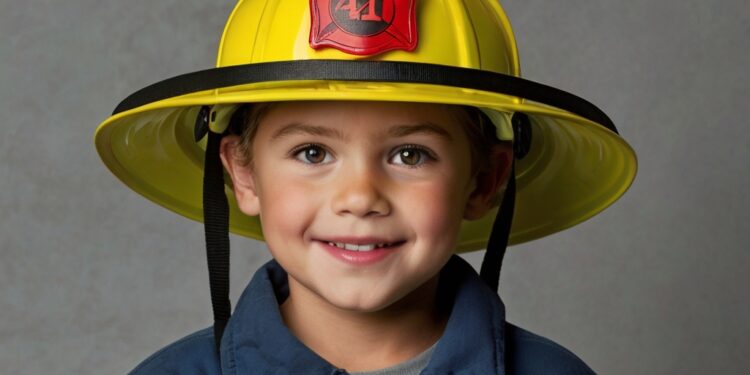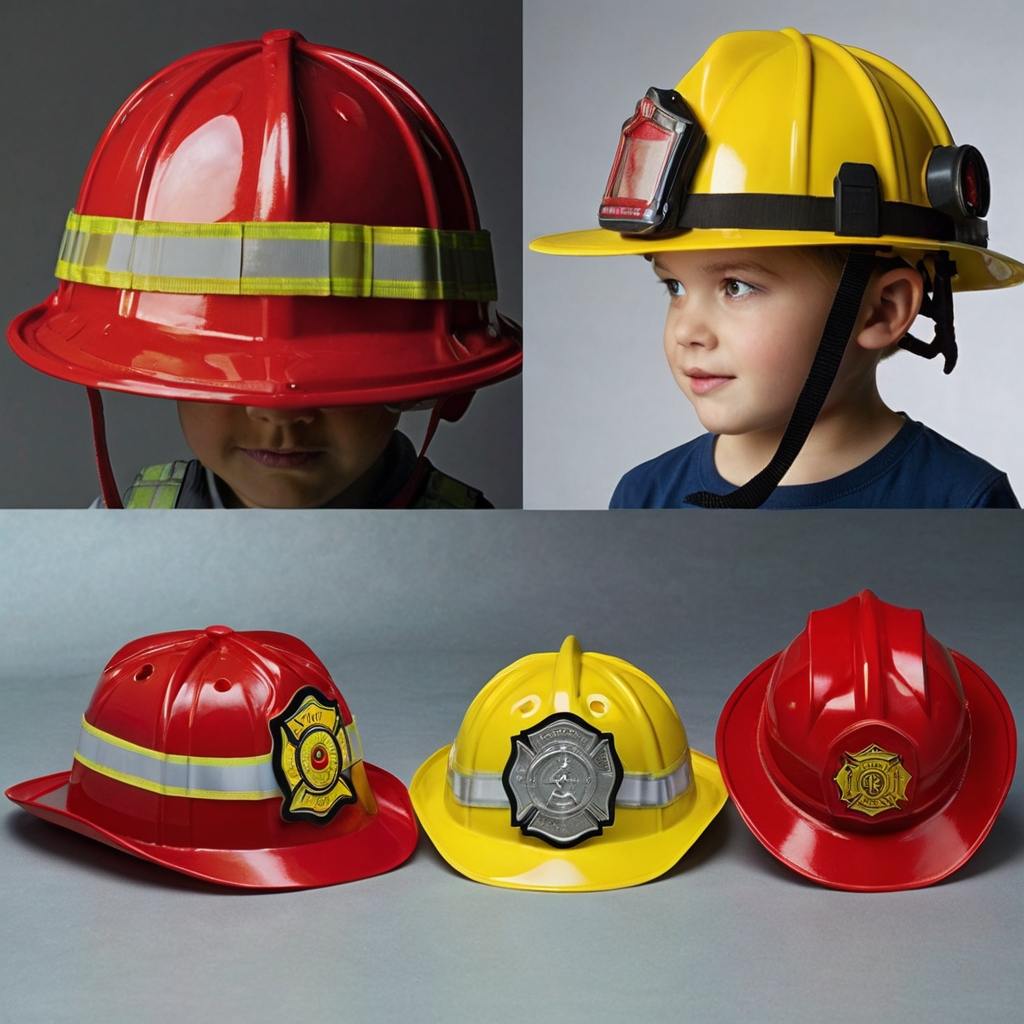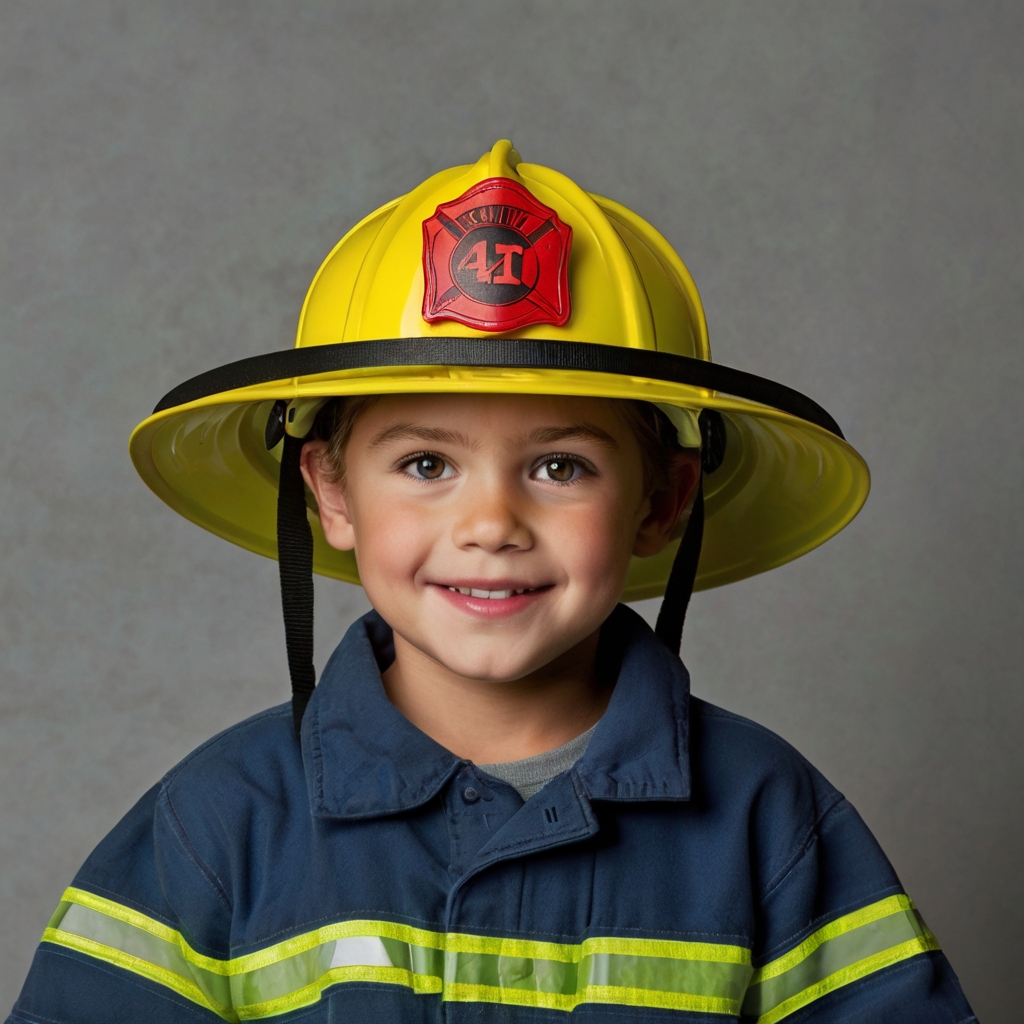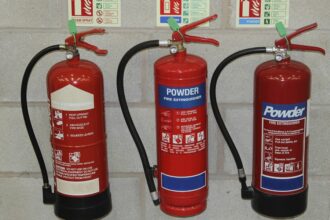Firefighter Hat

A firefighter hat craft video has amazed over 26 million viewers and shows the growing popularity of educational activities. Parents can create these hats with paper plates and red paint. The process looks easy, yet many parents face unexpected challenges.
Firefighters and other first responders serve a vital part in emergency response. These crafts teach children about community helpers effectively. The right techniques and materials determine the success of this activity. This piece shows parents how to avoid common mistakes in creating firefighter hats with their children. Parents will find practical solutions that ensure a rewarding craft experience.

Table of Contents
Essential Safety Tips for Firefighter Hat Crafts
Safety must guide every step when creating a firefighter hat craft with children. The Arts and Crafts Materials Institute (ACMI) has set specific certification standards that parents should look for while choosing materials.
Age-appropriate materials
Products with the AP (Approved Product) seal don’t contain toxic substances that could harm children. On top of that, art supplies need to display the “conforms to ASTM D-4236” label to show they’re safe for children to handle. Children under 12 should only use student-grade materials because adult-grade products might contain harmful chemicals like cadmium or formaldehyde.
Proper scissors handling
Safe scissor usage needs specific attention. Adults must watch children during cutting activities. These safety guidelines are vital for scissor use:
- Point scissors away from the body and use only while seated
- Make small snipping movements with the paper moving around the scissors
- Keep hands and fingers clear of the cutting path
- Use scissors exclusively for paper, never for clothing or hair
Paint safety considerations
Paint selection is a vital part of craft safety. Children should use water-based products instead of solvent-based alternatives. Student-grade paints are made specifically for young artists and don’t have risks from harmful additives or mildew-resistant chemicals.
Good airflow in the workspace helps reduce exposure to paint fumes. Children should wear protective gear like smocks to keep paint off their skin and clothes. Supervising adults must make sure children don’t eat, drink, or put brushes in their mouths during the activity.
Paint contact with eyes or skin requires quick action. The Poison Control hotline (1-800-222-1222) offers free expert help 24 hours a day. Most cases with properly chosen art materials have minimal effects when everyone follows safety guidelines.
Common Mistakes When Making Firefighter Hats
You might feel frustrated when your firefighter hat craft doesn’t turn out right. Let’s look at some common mistakes that both parents and kids face and how to make this craft project a success.
Wrong paper plate size
The right paper plate can make all the difference in your final creation. Many parents buy rigid, expensive plates that end up cracking when you fold and cut them. The cheaper, flexible paper plates actually work better for this craft. Your plate should fit well on your child’s head – you’ll need to cut about three-quarters of the inner circle.
Paint application errors
Paint application creates the most obvious mistakes. Parents often rush through painting and run into these problems:
- They start painting without planning the design
- The plate edges don’t get painted first
- They use wrong brush sizes for different areas
- They don’t let each coat dry
Start by painting the outer edges and work your way in. Different sized paint brushes help you create various effects and cover everything evenly. The paint needs to dry completely before you start cutting or folding.
Incorrect cutting techniques
Bad cuts can ruin your whole project. The U-shaped cut in the plate’s inner portion stands as the most important step. Parents often cut the inner circle too small or make it uneven. The quickest way to get this right is to measure your child’s head first and mark where you’ll cut.
There’s another reason why cuts go wrong – when shaping the edges to create that classic firefighter hat look. You want a curved line that creates a muffin-top look when the flap stands up. Quick cuts here lead to jagged edges or uneven shapes.
Small, controlled snips work better than trying to cut long sections at once. You need to keep the plate’s structure intact while you shape it. A three-quarter cut of the inner circle gives you enough flexibility and keeps your hat stable.
Choosing the Right Materials
Quality materials are the foundation of a firefighter hat craft project. The right mix of supplies will give you both durability and an authentic look.
Best types of paper plates
Expert crafters recommend flexible, inexpensive paper plates instead of rigid ones. Chinet paper plates have a canvas-like texture that takes paint smoothly. The plate’s flexibility lets you fold and shape it without cracks or tears.
Here’s what to look for in paper plates:
- Sturdy natural fiber construction
- Flexible material that bends without breaking
- Size that works for preschool to early elementary children
The plate should feel like compressed pulp rather than stiff plastic. This makeup helps both the crafting process and environmental consciousness because natural materials break down more easily than synthetic ones.
Paint selection guide
Your choice of paint substantially affects the final look and durability of the firefighter hat. Fluid acrylic paints are the best choice that give superior coverage and easy application. These paints flow smoothly on paper plates and create an even finish without needing multiple coats.
Key points to think about for paint:
- Consistency: Fluid or craft paints work best on paper surfaces
- Coverage: Red paint should cover well without getting too thick
- Application: Different brush sizes create various effects
Golden Fluid Acrylic Paints work exceptionally well for paper plate projects. If you use standard acrylic paint, add a bit of water to get the right consistency for smooth application.
Set up a dedicated painting station with these items to get the best results:
- Paint palette (another paper plate works great)
- Water container to clean brushes
- Various brush sizes for different areas
- Clean rags for spills and fixes
Your paint should stay vibrant after it dries and create a professional look that matches real firefighter equipment. The paint must also stick well to the paper plate without cracking or peeling as you build your hat.

Step-by-Step Assembly Guide
A firefighter hat project will give a fun crafting experience that parents and children can enjoy together. This piece shows you how to create one with attention to detail and proper technique.
Preparing the base
Start with a clean paper plate and red paint. Paint the plate red from its outer edges toward the center. Let each coat dry to prevent smearing. A light pencil mark at the plate’s center helps guide the next steps.
The next vital step focuses on cutting the plate. Create a U-shaped cut in the inner portion that fits your child’s head. Remove about three-quarters of the inner circle while keeping enough material for stability.
Creating the badge
A badge adds authentic detail to your firefighter hat. Cut a shield shape from yellow construction paper or sticky foam. Add “F.D.” on the badge with a black marker to show Fire Department. You can personalize it with numbers or other fire department symbols.
Final adjustments
The simple structure needs proper shaping. The front portion should bend upward to match a real firefighter hat’s shape. A 45-degree angle works best for looks and stability.
Attach the badge to the upward-facing flap. Strong adhesive or a glue stick works well – press firmly so it bonds properly. Every edge needs proper sealing. Let the glue dry completely before you handle it.
Test how the hat fits last. Put it on your child’s head and adjust it to make sure it feels right. The U-shaped cut should fit snugly yet comfortably while the front stays upright.
Check all edges for rough spots or sharp corners that need smoothing. This step keeps the finished hat safe and durable.
Making the Activity Educational
The firefighter hat activity goes beyond just crafting. It’s a powerful educational tool that gives parents and educators a chance to teach significant life skills through a detailed learning experience.
Teaching about fire safety
This craft creates natural discussions about fire safety. Stanford Medicine reports that children who start fires cause about USD 280 million in property damage each year. So teaching fire safety through engaging activities is a vital part of child education.
Here are the fire safety lessons to blend while making the firefighter hat:
- Practice “stop, drop, and roll” techniques
- Learn about smoke alarm importance
- Understand emergency exit procedures
- Memorize the emergency number (911)
- Recognize that firefighters are helpers, not scary figures
We focused on outdoor fire safety during the craft session. This included bonfires, forest fires, and campfire safety. Kids learned to spot hazards and developed safer behaviors.
Learning about community helpers
The firefighter hat craft naturally guides kids to learn about community helpers and their roles. Kids see how different professionals keep everyone safe and healthy.
Kids find that firefighters do many jobs:
- Putting out fires
- Working at fire stations
- Operating fire trucks
- Using specialized equipment like hoses and ladders
Songs and rhymes make learning more fun. Kids remember simple verses like “Fire Fighter, fire fighter, hear the alarm, Save the building from any harm”. Games that match community helpers with their tools help kids understand better.
Craft activities create visual connections that help kids grasp safety concepts. This hands-on method ended up improving information retention. Kids often become fire safety champions and share what they learn with their families.
Interactive elements add more educational value. To cite an instance, kids practice with squeeze bottles filled with water to “put out” paper flames. This makes learning both fun and practical. Making emergency exit maps or doing simple fire drills while wearing their crafted hats reinforces safety rules.
The activity boosts critical thinking as kids compare different community helpers’ jobs. They learn to identify situations where they might need help from firefighters or other emergency responders. This builds their confidence in knowing when to ask for help during emergencies.
The craft session lets kids show gratitude to community helpers. Many educators suggest writing thank-you cards to local firefighters. This helps kids appreciate those who protect our communities.
Firefighter hat crafts deliver more than just artistic value – they provide a gateway to significant life lessons and safety education. Children benefit when parents follow safety guidelines, choose the right materials, and avoid common mistakes in these meaningful learning activities.
The right materials and proper techniques turn these crafts into powerful teaching tools. Young minds learn about community helpers while developing significant safety awareness. Creative expression combined with practical education makes these firefighter hat crafts work exceptionally well for young learners.
The project’s success depends on careful attention to detail. Parents should select flexible paper plates and apply paint with precision. Each step requires time and patience, especially during the cutting and assembly phases, which guides the project toward better outcomes. These crafts create perfect moments to discuss fire safety and emergency preparedness.
A simple craft session becomes a valuable chance for children to connect with and appreciate their community’s first responders. This hands-on approach helps children learn important safety concepts while promoting creativity through play.
Some FAQs about the firefighter hat:
What is a fireman’s hat called?
A firefighter hat is commonly called a firefighter helmet. It is designed to protect firefighters from heat, falling debris, and water. The red firefighter hat adult versions are often used for ceremonial or parade purposes, while modern firefighter helmets are made from heat-resistant materials for safety.
What is a firefighter hood called?
A firefighter hood is called a Nomex hood or fire-resistant hood. It protects the head, neck, and ears from extreme heat and flames. Firefighter hat designs often include these hoods as part of the full protective gear for fire suppression and rescue operations.
What does 5555 mean to firefighters?
The number 5555 in firefighting represents a long-standing tradition of honoring fallen firefighters. It originates from a time when fire departments used bell signals to communicate. In some firefighter hat clipart and memorials, the number 5555 is included to pay tribute to those who lost their lives in service.
What is the firefighter symbol called?
The firefighter symbol is called the Maltese Cross. It represents bravery, protection, and sacrifice in the firefighting community. Many firefighter hat designs, including the free printable firefighter hat template printable, feature this emblem as a mark of honor and tradition.
What is a kepi hat?
A kepi hat is a flat-topped, cylindrical cap with a visor, historically worn by military and law enforcement personnel. It is not typically associated with firefighting, but some firefighter hat adults wear decorative kepi-style hats for special occasions.
Why are firefighter hats like that?
Firefighter hats are designed with wide brims and durable materials to protect against heat, falling debris, and water. Traditional red firefighter hat adult styles have a long back brim to channel water away from the neck. The shape has evolved to provide maximum safety and comfort in dangerous environments.
What is a fiddler hat?
A fiddler hat is a round, flat-brimmed cap often associated with maritime and folk musicians. It is not a common style for a firefighter hat, but some vintage firefighter hat designs may resemble the classic shape.
What is a kettle hat?
A kettle hat is a steel helmet with a wide brim, historically worn by soldiers for protection against projectiles and sun exposure. While not a modern firefighter hat, some old firefighter helmets had similar wide-brimmed designs for protection from falling debris and heat.

